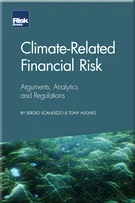Market risk measurement and management
Introduction
Value-based management
The risk management and capital management frameworks
Credit risk measurement and management
Market risk measurement and management
Property and casualty insurance risk measurement and management
Life insurance risk measurement and management
Operational risk measurement and management
Economic capital
Regulation and regulatory capital
Ratings and rating agency capital
Conclusion: looking backwards and forwards
Acknowledgements
Glossary
5.1 INTRODUCTION
Market risk is the risk of loss in value to the company due to the movements in financial market variables such as stock prices, interest rates, exchange rates, commodity prices and real estate values. The market risk affects the value of the assets as well as the value of the liabilities or insurance policies, especially those with embedded dependency on financial market variables. For example, the value of a fixed-rate bond decreases as the interest rate increases, and the value of the embedded guarantee in a variable annuity (VA) increases as the stock price drops.
Risk factors within the market risk category usually include the following.
-
Interest rate risk. This refers to the risk of loss to the company due to the movement of the risk-free interest rate. Interest rate risk is an important part of asset–liability management (ALM) and is also known as ALM risk.
-
Equity risk. This is the risk of loss to the company due to the movement in the stock price. The equity risk to an insurance company arises mainly in two ways. First, a decrease in the stock price reduces the value of the company’s investment in common stocks and other equity-like instruments such as
Copyright Infopro Digital Limited. All rights reserved.
As outlined in our terms and conditions, https://www.infopro-digital.com/terms-and-conditions/subscriptions/ (point 2.4), printing is limited to a single copy.
If you would like to purchase additional rights please email info@risk.net
Copyright Infopro Digital Limited. All rights reserved.
You may share this content using our article tools. As outlined in our terms and conditions, https://www.infopro-digital.com/terms-and-conditions/subscriptions/ (clause 2.4), an Authorised User may only make one copy of the materials for their own personal use. You must also comply with the restrictions in clause 2.5.
If you would like to purchase additional rights please email info@risk.net










